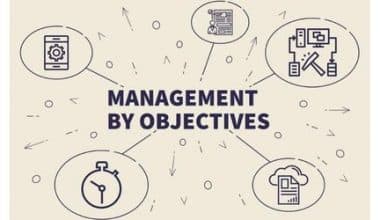Attendees at a business meeting can share their ideas and gain new perspectives on the difficulties and possibilities facing the company. You can manage a business meeting effectively if you have a firm grasp of the purposes. Learning how to run a productive meeting will allow you to provide your attendees with useful information and insights that can increase their efficiency and morale. Read on to know more about what a business meeting is. We also explained how to write business meeting minutes and a business meeting agenda. Let’s dive in!
What Is Business Meeting?
A business meeting is a formal discussion held for business purposes, which may include employees from the same division or level of management, as well as external stakeholders such as customers. The purpose of an agenda in a business meeting is to provide everyone involved with a sense of what will be covered and how they may best prepare for the meeting so that it is successful. It is possible to hold a business meeting in a private office, as well as in public places like meeting rooms, convention centers, and even online. In order to keep track of important conversation topics for later use, attendees may also take business meeting minutes.
Types of Business Meetings
The following are the types of business meetings:
#1. Team-building Meetings
While teams may interact frequently in the course of business, the stress and distance that can develop between members can be reduced by organizing team-building activities outside of regular meetings. The major goal of these gatherings is team cohesion, hence they tend to be lighthearted and entertaining. This is a great chance to get to know your coworkers outside of work and build stronger bonds amongst teams, especially if some employees work remotely. Teamwork and trust can be bolstered through deliberate leadership preparation for team-building events. Some examples include team lunches, outings, and corporate retreats for employees who aren’t as close to one another.
#2. Problem-solving Meetings
Problem-solving meetings share similarities with decision-making meetings in that they aim to accomplish a certain goal. It facilitates communication among workers and encourages them to collaborate on finding solutions to problems as well as identifying and discussing ways to lessen the impact of any associated risks. This kind of meeting can be scheduled ahead of time if the team discovers the problem in advance, or it can happen in the midst of unexpected emergencies that call for the group’s immediate attention. The team may need to hold a number of follow-up sessions to determine if the solution is effective after engaging in such in-depth study and preparation during the initial meeting.
#3. Status Update Meetings
Participants in this sort of gathering are expected to report on their current progress. Team members and leaders can provide the latest updates on ongoing projects and campaigns during these meetings. Teams may hold status update meetings once a week or once a month to ensure everyone is up-to-date on what each person is working on and to eliminate confusion about current projects. Having a clearer picture of everyone’s production levels allows for more effective task planning, which in turn boosts efficiency on the job.
#4. Decision-making Meetings
Company executives or division heads typically make up the attendees of a decision-making meeting. They take part in meetings where important company decisions are made, such as those where expansion plans or new product ideas are discussed. Decision-makers frequently convene multiple times to collect and assess evidence, generate ideas for addressing a problem, and settle on a course of action.
#5. Brainstorming Meetings
Organizations occasionally need to make changes to their current goods or processes or come up with new ones. As a result, they hold meetings to facilitate the exchange of ideas and the generation of new ones. Brainstorming sessions bring individuals together to share ideas, spark motivation, and gain insight from one another. It’s also great for team morale and bonding. The success of the meeting can be enhanced by creating a setting in which everyone feels safe expressing their thoughts and receiving criticism without fear of reprisal.
#6. Planning Meetings
A company needs planning meetings to organize the process and outline future business plans so that staff may work more efficiently. Depending on the company’s needs, such meetings may be held weekly or quarterly. This also ensures that everyone is up-to-date on their responsibilities and boosts the effectiveness of plan execution. Employees who will be involved in the planning process are usually present, as well as a leader who will steer the conversation and assign roles. Campaign planning, product road map design, and event preparation are all examples of activities that might benefit from a well-organized meeting schedule.
#7. Training Meetings
The primary purpose of this kind of meeting is to impart fresh information or knowledge to the attendees. Usually, a senior member of the group, such as a manager or team leader, takes on the mentoring role and imparts knowledge to an individual or group. Meetings can be held to teach workers a new method, idea, or skill. Customers can also utilize these to get comfortable with the features of a service or product. Training sessions can improve productivity, professionalism, and morale among staff members while also fostering better client connections. Seminars on products, workplace safety, and new employee orientation are just a few of the examples.
#8. One-on-one Meetings
This kind of meeting often only comprises two participants and has a clear goal. It might happen between partners and managers, clients and salespeople, or supervisors and staff. These meetings might be for the purpose of discussing an employee’s performance, conducting an interview, conducting an investigation into an event involving an employee, discussing sales with the company’s vendors, or discussing an agreement with a customer. A formal business meeting agenda isn’t necessary for this kind of meeting, but the host will still want to make note of the most important points to cover.
Business Meeting Minutes
Business meeting minutes are notes that are taken during a business meeting. They highlight the main points that are made, the votes that are taken, and the tasks that are assigned. Also, one person is assigned to record business meeting minutes. Their responsibility is to document thoroughly the discussion that took place.
What Is the Purpose of Business Meeting Minutes?
The minutes of corporate meetings serve as a record of past debates, decisions, and strategic planning. The business meeting minutes serve as a record for participants to look back on and see what kind of progress has been made. However, those who were unable to attend but still need to be aware of the meeting’s outcomes can read the minutes for themselves.
How to Write Business Meeting Minutes
The following are the steps you need to follow when writing business meeting minutes:
#1. Date and Time of the Meeting
Taking down the meeting’s time and date should be the first step before you begin writing the minutes. This may seem obvious, but it’s worth bringing up because it’s crucial to have a record of when things have been discussed, what’s been achieved, and what’s still left to do.
#2. Names of the Participants
The next thing to do is make a list of everyone who attended, as well as everybody who was invited but couldn’t make it. At the outset of most meetings, there is time set aside for the acceptance or amendment of prior meeting minutes, giving you a chance to review the names of those in attendance and generate a preliminary roll call. Also, check names off the list as people enter the room by referring to the calendar invite.
#3. Purpose of the Meeting
The “why” of this meeting needs to be recorded and made clear for everyone’s benefit. In this section of the meeting minutes, please provide a thorough explanation of the need for the meeting and its intended outcomes. This will be especially helpful for those who couldn’t make it to the meeting and for those who are utilizing the outcomes to guide their decisions.
#4. Agenda Items and Topics Discussed
Create bullet points for each item on the agenda and use these to keep track of the meeting’s progress and any key decisions that were taken as you took notes. It’s helpful to distribute the meeting agenda in advance so that everyone has a chance to review it, add to it, and offer changes. This also ensures that no one will be caught off guard by the topic at hand during the meeting.
#5. Key Decisions and Action Items
As a result of productive meetings, individuals are given tasks to do. If you want an accurate transcription of any discussions, choices, or actions, you need to record them as quickly as possible after they occur. It would be impossible to record everything. Pay attention to the next steps that need to be taken in light of the important decisions, recommendations, issues, and solutions that have been highlighted. Make sure that these lessons are highlighted in the meeting minutes so that they don’t get lost.
#6. Next Meeting Date and Place
Include the date and time of the next scheduled meeting for this project or topic if you are taking formal meeting minutes. This provides a rough estimate of how long meeting participants have to finish the tasks they’ve been given.
If you know when your next meeting is, you can better organize your schedule and focus on the most important activities. Whether you’re having a meeting in person or online, knowing where it will take place is crucial.
#7. Documents to Be Included in the Report
Finally, don’t forget to attach any relevant supporting materials to the business meeting minutes you distribute. You should consider including any relevant documents that were discussed or used during the discussion. Indicators, Key Performance Indicators, Project Updates, and/or Changes are all examples of such documentation.
When conducting a meeting via a video conferencing service like Zoom or Google Meet, it is common practice for teams to record the meeting or generate an automatic transcript.
Business Meeting Agenda
The events that will take place during a meeting are outlined in the agenda. This could include subjects, objectives, a schedule, designated speakers, supporting materials, and talking points. Before a meeting, attendees are typically given an agenda to review in advance. You should review the process of creating an agenda if you’ve ever considered using asynchronous communication in place of a meeting. Agendas for meetings are useful not just during but also after they have concluded.
How to Write a Business Meeting Agenda
You need to follow these steps to write a meaningful business meeting agenda:
#1. Focus On One Theme
Make sure you know your goals for the meeting before you start making plans for it. Where are you hoping to go? To what end are we convening today? Set the parameters for the gathering. Meeting attendees will be more prepared if they are given advance notice about the meeting’s theme and purpose. However, what you hope to achieve through this meeting is what you should outline in your objectives.
#2. Decide on Topics
To avoid wasting time at the meeting, it’s a good idea to see if anyone on your team, on the board, on the committee, or in any other influential position has anything they’d like to bring up. By allowing everyone a voice, we can assure that no one has to raise theirs above the rest. Prepare for your meeting by making a list of topics based on the information you gathered about your stakeholders, your goals, and the sort of meeting you will be holding. Make sure the meeting’s purpose and the issues to be discussed are consistent with one another.
#3. Set Time Limits and Leaders for Each Topic
The best way to keep things on track is to allocate a specific amount of time to talk about each issue. The meeting organizer should choose a leader for each topic if they don’t intend to moderate the discussion themselves. The person in charge of a particular agenda item is expected to steer the meeting in the right direction, present any necessary materials (such as slides), and keep the discussion within the allotted time frame.
#4. Consider Necessary Documents
Get together a list of everything that has to be brought to the meeting. Some examples of such materials are presentation slides, data, project information, testing findings, wireframes, prototypes, attendance sheets, and minutes from previous meetings. Make sure you inform the appropriate people on your team and write it into the agenda if they need to bring these materials to the meeting.
#5. Leave Time for Discussion and Overview
Schedule a quick recap and roundtable discussion for the end of the agenda. If the meeting is running behind schedule, people may need some time at the end to ask questions. It’s also not a bad idea to review the meeting’s material again if you’re trying to accomplish something. Weekly meeting hosts may not need too much time for this. Reviewing a meeting’s highlights in just five minutes is common practice. However, if this is a monthly meeting or the topic is novel, you should save ten to twenty minutes for wrap-up.
How to Conduct a Business Meeting
How you conduct the business meeting will surely determine the success of it. Here are some things you need to take note of to conduct a meaningful business meeting:
#1. Identify the Purpose
Find out why you’re holding the meeting before you get started on the agenda. Determine the purpose of the meeting and the key topics you wish to cover. Think about who you want to invite and why you want them there before you send out invitations. Meetings are more likely to be successful if their goals and objectives are clearly defined in advance.
#2. Invite Participants
Determine who should be invited to the meeting after you have established its purpose. To accommodate as many people as possible, think about when and where they are available to meet. Check the calendars of other corporate meetings to avoid scheduling a session that already has been planned. An email’s invitation and acceptance/rejection functionalities make it easy to get people together for a meeting and get their responses.
#3. Prepare Materials
It is helpful to have discussion-starting items ready before the meeting. You may make a presentation using slides or draft some notes to go along with the material. If you want to feel comfortable when giving a presentation in front of an audience, practicing it aloud can assist. An agenda can be useful in determining the meeting’s direction in addition to the presentation.
#4. Organize the Space
Prepare the meeting location on the day it is to take place. Make sure everyone has a comfortable place to sit. Make sure any projectors or video conferencing equipment you intend to utilize is properly set up and ready to go before the meeting. It could be a good idea to print out copies of the meeting agenda and/or presentation so that attendees can follow along.
#5. Begin the Meeting
If the people in attendance aren’t your direct employees, it’s polite to start the meeting by properly introducing yourself. Those who are not previously acquainted with one another should introduce themselves. It can be useful to have someone take notes during meetings and then share them with the rest of the group afterward. Introduce the format of the business meeting and the topics you intend to cover in your presentation.
#6. Wrap up the Presentation
Finish the presentation while keeping in mind that time is of the essence. Speak clearly and use nonverbal cues like gestures and facial expressions to keep the attention of your listeners. Participants can share their thoughts as you give the material, or you can save time for a more in-depth discussion towards the end of the meeting, depending on the nature of the gathering. Allow time for questions and comments on the meeting’s topic after you’ve finished your presentation.
#7. End with a Call to Action
Meetings are best wrapped up by summarizing future steps after a round of discussion. Make it obvious what you want them to do so they can fulfill your expectations. End the meeting by expressing gratitude to all who attended for interrupting their day to be there. They may feel more valued and respected as a result of your appreciation.
#8. Follow Up with Participants
Get the meeting minutes from the designated note taker you appointed. You should share this data with the other people in the meeting once you have it. A meeting summary can be sent to attendees to refresh their memories on what was discussed and what follow-up is expected of them. Email is a convenient way to follow up on a meeting, see how things are coming along, and assess whether or not it was worthwhile.
Best Practices for a Business Meeting
The following are the best practices for a business meeting:
#1. Dress Appropriately
To ensure you make a good impression at your meeting, consider reviewing the corporate dress code. Meeting attendees can sense your level of respect based on how you dress.
#2. Be Prompt
Whether you’re the one in charge of running the meeting or just another participant, getting there early will give you more time to prepare. During this time, everyone can settle in, say their hellos, and get to work on the tasks at hand.
#3. Listen Actively
Pay attention when other people are talking to indicate that you value their thoughts and ideas. Making eye contact, nodding in agreement, and taking notes are all examples of active listening.
#4. Put Down the Phone
It may be better to put your phone in silent or even airplane mode, depending on the circumstances. This can assist you to focus on the meeting at hand and not letting your attention wander.
#5. Be Patient and Wait for Everyone to Show Up
When holding a meeting, it’s polite to wait for everyone to show up before getting started. It also makes sure that all attendees get the same information and are on the same page regarding the meeting’s purpose.
#6. Allow Others to Voice Their Opinions
Make sure everyone gets a chance to speak their mind at meetings. When you open up a debate to everyone and let them share their thoughts, you show that you respect their knowledge and insight.
What Is the Importance of a Business Meeting?
Meetings are an integral part of any successful business. It’s useful for monitoring the steps your company takes to achieve its aims. It’s a great tool for keeping everyone on the same page, generating new ideas, resolving conflicts, reaching consensus, and fostering camaraderie.
The 4 Basics of Business Etiquette?
- communication styles
- dress and appearance
- technology
- social situations
What Are the 4 Main Objectives of a Business Meeting?
- Kick off a new project.
- Align on project/team status and goals.
- Brainstorm.
- Make decisions.
- Share information.
- Introduce new team members or clients.
- Evaluate projects (and reflect on what to do next time)
What Not to Do in a Business Meeting?
- Unnecessary Meetings.
- Getting Personal.
- Time Wasting.
- Winging It.
- Confrontation.
- Disengagement.
- Not Following Up.
Final Thoughts
A business meeting is a get-together of experts who get together to talk shop, make adjustments, or toast the group’s success. corporate executives and employees, corporate representatives and clients, or department leaders and their teams are all potential attendees during a company meeting. However, many companies and groups now hold meetings not in the office but online, using some form of conferencing technology or software.
Related Articles
- Minutes For A Meeting: Meaning, Example, and How to Write One
- ZOOM FEATURES: Meaning, Pricing, and How to Use It
- FOCUS GROUP: Definition and Detailed Guide on How to Run a Focus Group Discussion
- 33 Best Event Management Software and Tools In 2023
- SALES STRATEGY: Meaning, Examples, Plan, Types and Presentation






